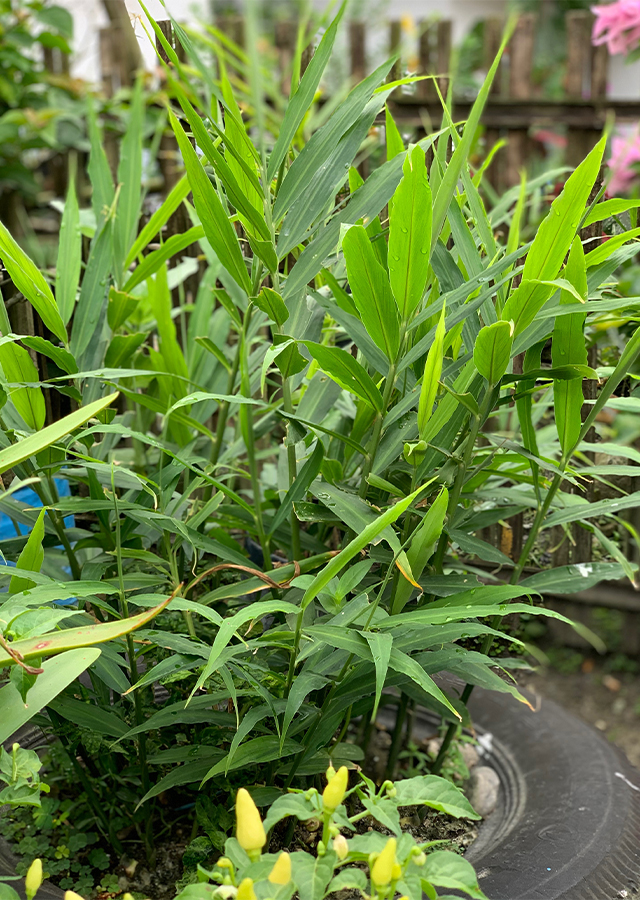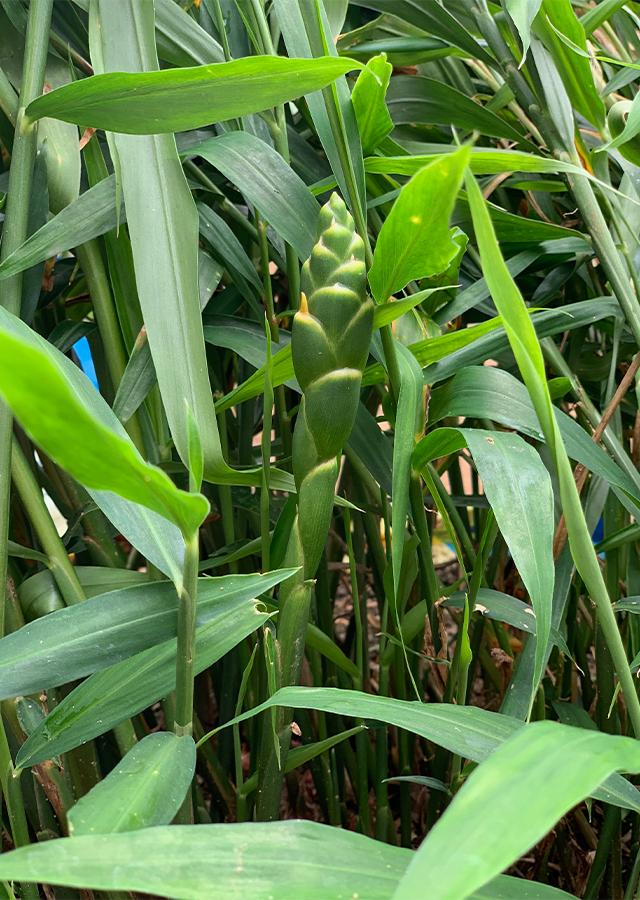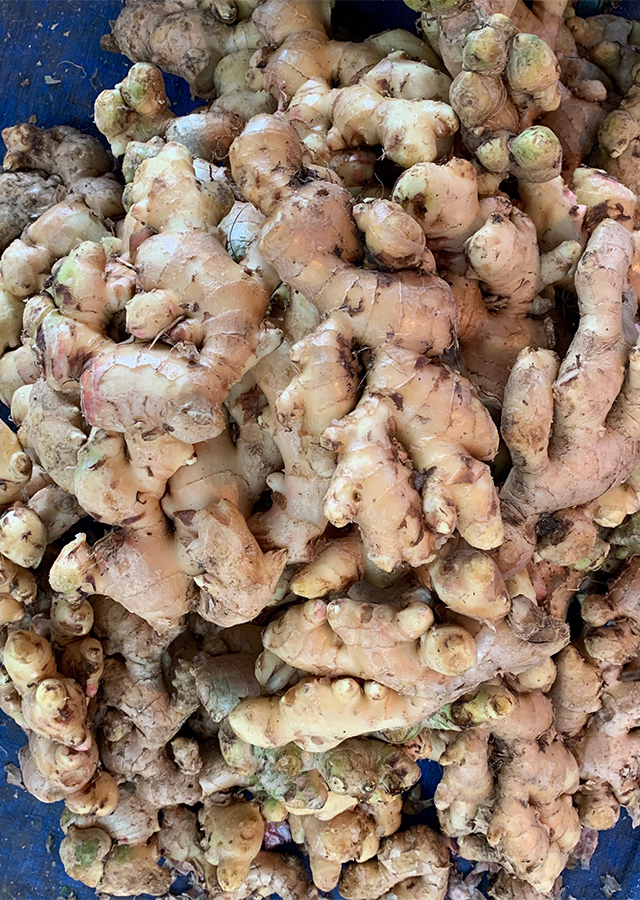Traditional Herbs from Zingiber officinale
sore_and_back_pain
- Crush 50 g of ginger, add 1 tbsp of warm water.
- Apply to body aches/pain while massaging.
relieve_cough
- Prepare 50 g of ginger, 2 cm galangal, 200 ml of water, 1 tablespoon of honey, 1 tablespoon of lime juice.
- Mash the ginger and galangal then boil until 100 ml of water remains. Cool until warm, add honey and lime.
- Drink 1 tablespoon 3 times a day after eating.\u00a0
What is Zingiber officinale Looks like??



Parts of Zingiber officinale that could be used
- Leaves
- Rhizomes
Zingiber officinale Distribution
Has three varieties, including: a). var officinale (elephant ginger), b). var rubrum (red ginger) and c). var amarum (bahing). Ginger comes from India and Southern China. Generally used as a spice or cooking spice and has many health benefits. Ginger produces an oil that is a common ingredient in perfumes and cosmetics.Agroecology of Zingiber officinale
Grows well in tropical to subtropical areas, altitude 200-1,000 m above sea level, rainfall between 2,500-4,000 mm/year, pH 6-7 and gets sunlight (70-100%) all day long with an optimum temperature of 20-35 °C . Likes sandy loam and lateric soil that is fertile, loose and rich in organic matter.
Morphology of Zingiber officinale
- Rhizome-shaped roots, a). branched, thick, wide (not cylindrical), pale yellow; b). red, scaly, slender, very spicy and very aromatic; c). small size brownish yellow, spicy and aromatic taste .
- False stem; a). Leaves are single, green, lanceolate, alternate .
- Flower compound, cone-shaped, a) and b). green red, c).
Cultivation of Zingiber officinale
Propagation by rhizomes from quality parents (genetic, physiological and physical quality).
Zingiber officinale, more details :
Chemical Content of Zingiber officinale
Geraniol, sesquiterpenes, kadinol, limonene, zingerone compounds, essential oils (al. a).zingiberen, gingeral, kamfena, lemonin, shogaol, paradols, b).�'-zingiberen, arcurcumene β-bisabolene, β-sesquiphellandrene, monoterpenoid) , farnesol, aspartic acid, chlorogenic acid.
Benefits of Zingiber officinale
Treats sore throat, coughs, colic, diarrhea, influenza, rheumatism, aches, back and stomach pain, increases appetite, worms, immune system, Alzheimer's therapy, antioxidant, antibacterial, anticancer, antidiabetic, antihyperlipidemia, antihypertension.
Simplisia of Zingiber officinale
- Wash fresh rhizomes thoroughly with running water.
- Chop them with a thickness of 5-7 mm.
- There are two ways to dry them, namely using a heating device (oven) with a temperature of 50-60 \u00b0C, or sunlight. During drying, go back and forth every 4 hours, so that it dries evenly, do this for 3-5 days or until dry.
- Pack the simplicia in a clean, airtight bag. Store in a dry place at room temperature.
Another Facts for Zingiber officinale :
Synonym of Zingiber officinale
Amomum angustifolium Salisb., Amomum zingiber L., Amomum zinziba Hill
Habitus of Zingiber officinale
Herb. Upright annual herb, about 30-60 cm high
Habitat of Zingiber officinale
- Forest
No comments:
Post a Comment